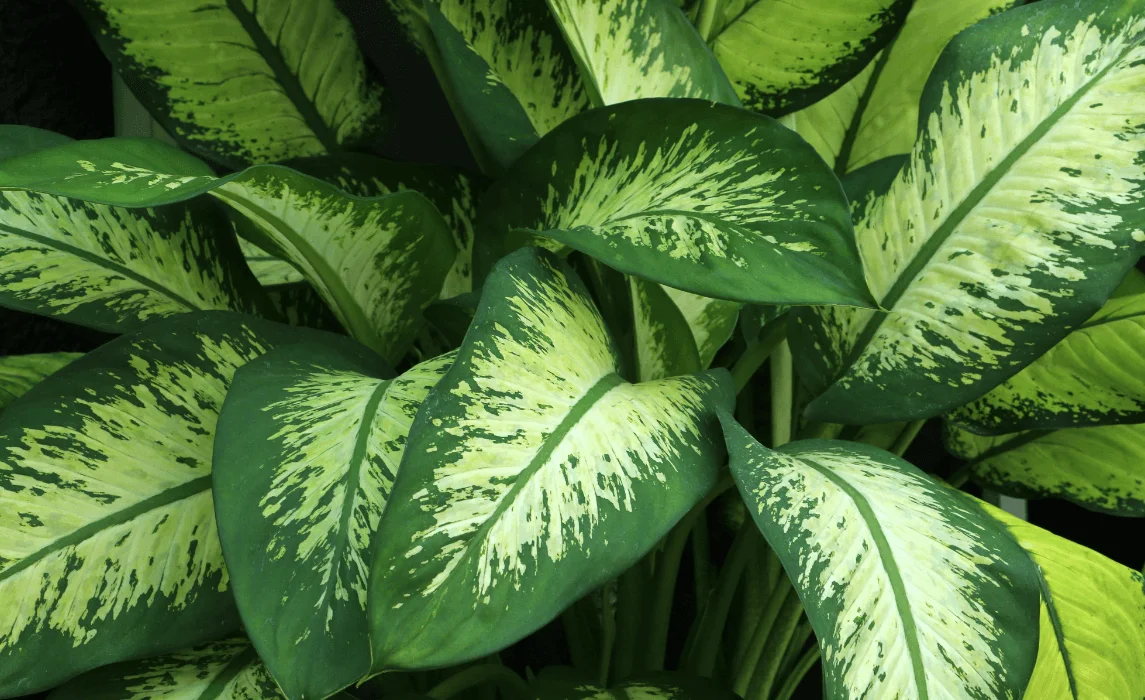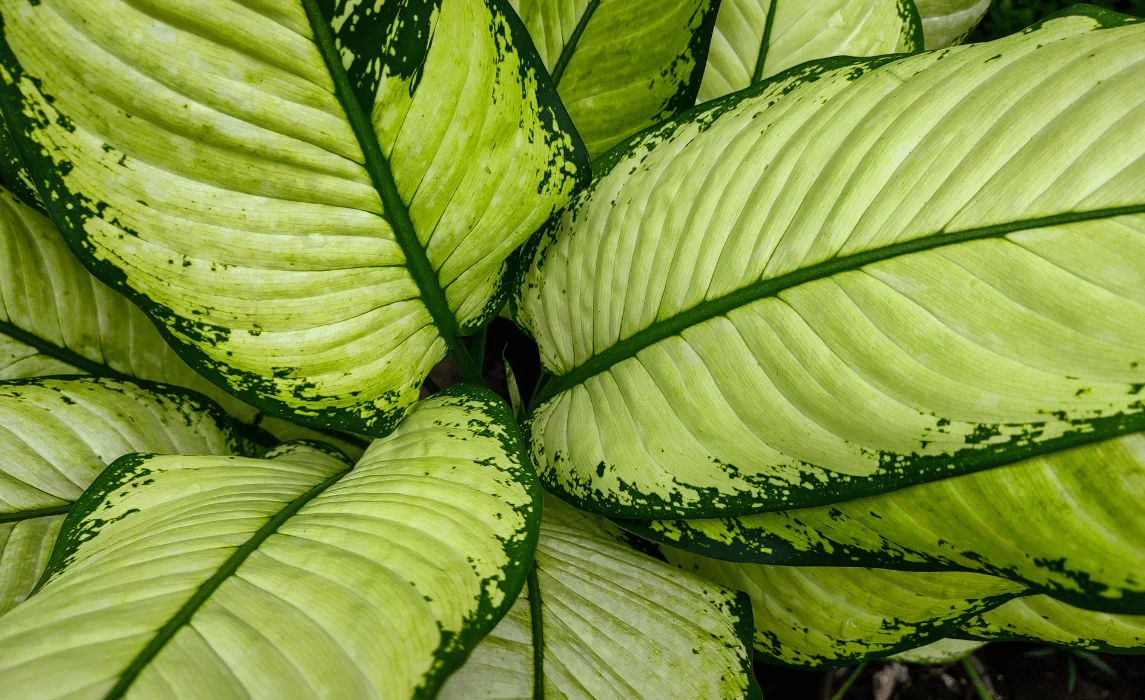Dumb Cane Plant (Dieffenbachia): Varieties, Fun Facts, and What Makes It Special

1. Are black-eyed Susans perennials or annuals?
Rudbeckia hirta, the traditional black-eyed Susan, is a biennial or short-lived perennial that often acts like an annual due to self-seeding. Some cultivars like Rudbeckia fulgida are true perennials that return every year.
2. When do black-eyed Susans bloom?
They typically bloom from early summer to early fall, filling your garden with bright yellow petals and dark black eyes. Regular deadheading encourages continuous flowering throughout the season.
3. How do I plant black-eyed Susan seeds?
Scatter Rudbeckia hirta seeds directly on the soil surface and press them lightly, as they need light to germinate. Keep the soil moist, and seedlings will appear within 7–21 days.
4. Can I grow black-eyed Susans indoors or in containers?
Yes. You can grow black-eyed Susans in containers indoors or outdoors. Use a regular seed starting mix, ensure proper drainage, and place them in a sunny location for maximum blooms.
1. What do yellow flowers symbolize?
Yellow flowers often represent friendship, positivity, and joy. They’re ideal for celebrating success, expressing gratitude, or brightening someone’s day.
2. Do yellow flowers attract pollinators?
Absolutely! Sunflowers, coreopsis, and goldenrod are magnets for bees, butterflies, and other beneficial insects.
3. Can yellow flowers grow in partial shade?
Yes, lilies and calla lilies tolerate partial sunlight, making them great for slightly shaded gardens.
4. How can I extend the bloom time of yellow flowers?
Deadhead spent flower heads, keep soil nutrients balanced, and ensure proper watering to promote continuous blooms.
1. Why should I attract ladybugs to my garden?
Ladybugs act as natural pest controllers, consuming aphids, mites, and other harmful insects that damage plants. By inviting them, you reduce pesticide use and encourage a healthier ecosystem.
2. What do ladybugs eat?
Ladybugs primarily feed on aphids, but they also consume whiteflies, mealybugs, scale insects, and other soft-bodied pests that plague vegetable and flower gardens.
3. How can I keep ladybugs in my garden year-round?
To retain ladybugs, provide consistent food sources (such as aphid-prone plants), water, and shelter like mulch, bug hotels, or dense plantings. Avoid using chemical insecticides that can harm them.
The Dieffenbachia plant, better known as dumb cane, has roots in the tropical rainforests of Central and South America. Growing beneath the canopy, this lush houseplant thrived in dappled sunlight, making it naturally suited for indoor life. It was brought to Europe in the 19th century, where it quickly gained popularity as a hardy decorative houseplant. Today, dieffenbachia remains one of the most reliable indoor plants, loved for its adaptability and striking foliage.
Why It’s Called “Dumb Cane”
The nickname “dumb cane” comes from the plant’s unusual sap. Inside the leaves and stems are calcium oxalate crystals, which can irritate the mouth and throat if chewed, causing temporary swelling and difficulty speaking, making you look "dumb" when affected by it, hence the name. While beautiful, this makes dieffenbachia a houseplant that must be handled with care. Always use gloves when you prune or repot to avoid skin irritation, and keep your plant out of reach of curious pets and children.
Surprising Facts About Dieffenbachia
Beyond its beauty, dumb cane comes with some fascinating traits. For one, dieffenbachia care is relatively simple compared to many tropicals, making it a beginner-friendly choice. Another fun fact is its growth speed. When given the right environment, this plant can grow quickly and may need frequent trimming. Like other tropical houseplants, it can also help freshen indoor air. Of course, no plant is perfect, and dumb cane may face common problems such as drooping leaves, yellowing, or browning tips. Most of these can be corrected by adjusting light, watering, or humidity.
Different Types of Dieffenbachia
Dieffenbachia seguine

This is the most classic and widely recognized dumb cane variety. It features large, oval green leaves streaked with white or cream patterns that brighten up indoor spaces. Because of its tall, upright growth, it can reach up to 6 feet indoors, making it a striking focal point in living rooms or offices. It’s hardy, adaptable, and one of the easiest types to find in garden centers.
Dieffenbachia amoena ‘Tropic Snow’

A favorite among houseplant lovers, ‘Tropic Snow’ stands out with its oversized leaves heavily marbled in creamy-white patterns. It can grow quite tall, often reaching 5–6 feet indoors, which makes it a great choice if you want a statement plant for a corner or entryway. Its bold variegation adds elegance, and it thrives best in bright, indirect light to keep its markings vibrant.
Dieffenbachia maculata ‘Camille’

‘Camille’ is a more compact variety, making it perfect for smaller spaces like desks, shelves, or apartment living. Its leaves are unique with creamy-yellow centers framed by dark green edges, giving it a painted look. Since it doesn’t grow as tall as other varieties, usually maxing out around 2–3 feet, it’s easy to maintain and move around as needed.
Styling & Placement Ideas
Dieffenbachia is as much about style as it is about greenery. Tall types like ‘Tropic Snow’ look stunning in a decorative pot placed in an entryway or living room corner. Compact varieties like ‘Camille’ are perfect for smaller spaces such as shelves, desks, or bedside tables. For a bold tropical effect, group your dumb cane with other leafy plants like monstera, pothos, or philodendron. Whether displayed as a single showpiece or part of a green cluster, this houseplant adds a lush, welcoming vibe to any room.
Safety First
While dieffenbachia is beautiful, safety is important. Its sap can irritate the skin and cause swelling if ingested. Always wear gloves when you prune, propagate, or repot to avoid direct contact. If you have pets or small children, place your plant in a higher location where it can’t be chewed. With a little caution, you can enjoy your dumb cane without worry while still appreciating its tropical appeal.
Why Add Dumb Cane to Your Collection?
There are many reasons to add dumb cane to your indoor garden. Dieffenbachia care is straightforward, making it a top choice for beginners. It comes in a wide range of sizes and colors, so whether you want a tall statement plant or a compact variety, there’s an option that suits your home. It’s also easy to repot, prune, and even propagate, meaning you can grow new plants from cuttings and share them with friends. With its bold foliage and forgiving nature, dumb cane earns its place as a must-have houseplant.
FAQ (Frequently Asked Questions)
Q: What are the most common pests that affect dieffenbachia?
A: Like many tropical houseplants, dumb cane can attract common pests such as spider mites, mealybugs, and scale insects. Regularly inspect leaves and treat infestations with neem oil or insecticidal soap.
Q: How do I fix common problems like yellowing leaves?
A: Yellow leaves usually mean overwatering, while drooping may indicate underwatering. Adjust your watering schedule and check soil moisture to resolve these common problems.
Q: Can I propagate dumb cane easily?
A: Yes! You can propagate dieffenbachia from stem cuttings placed in water or soil. Within weeks, new roots will form, giving you new plants to enjoy.
Q: How often should I repot my dieffenbachia?
A: Most dieffenbachias benefit from a fresh pot every 2–3 years, or sooner if roots start circling. Repotting not only gives them more space but also refreshes soil nutrients.
Q: Why is the Dieffenbachia plant also known as dumb cane?
A: Dieffenbachia is also known as dumb cane because its sap contains calcium oxalate crystals, which can cause temporary swelling and numbness in the mouth if ingested, making it difficult to speak.
Q: Why do the large leaves droop?
A: Drooping leaves may mean your plant is thirsty, overwatered, or suffering from cold drafts. Always check soil moisture first. If the soil is soggy, repot into fresh soil with better drainage.
Q: Can I remove older leaves from my dumb cane?
A: Yes, removing older leaves that are yellow or damaged helps redirect the plant’s energy to new leaves. Always prune with clean scissors and avoid cutting too close to the main stem.
Q: Can dieffenbachia plants grow quite large?
A: Yes, given the right conditions, a dieffenbachia plant may grow quite large—up to 6 feet indoors and even taller in tropical climates. Regular pruning helps control its size and shape.






